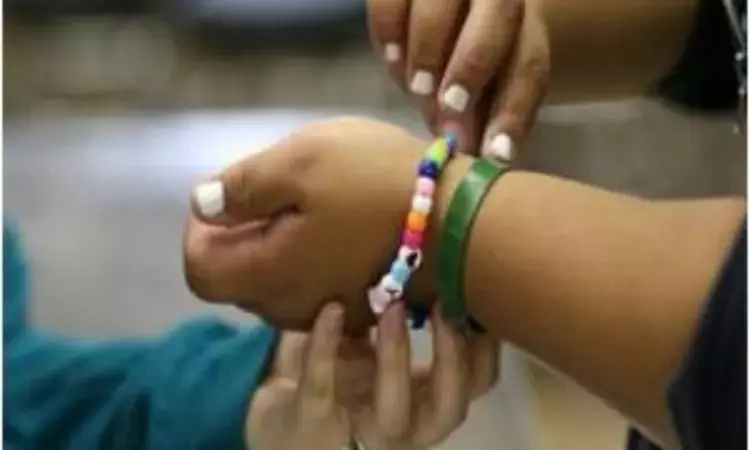- Home
- Medical news & Guidelines
- Anesthesiology
- Cardiology and CTVS
- Critical Care
- Dentistry
- Dermatology
- Diabetes and Endocrinology
- ENT
- Gastroenterology
- Medicine
- Nephrology
- Neurology
- Obstretics-Gynaecology
- Oncology
- Ophthalmology
- Orthopaedics
- Pediatrics-Neonatology
- Psychiatry
- Pulmonology
- Radiology
- Surgery
- Urology
- Laboratory Medicine
- Diet
- Nursing
- Paramedical
- Physiotherapy
- Health news
- Fact Check
- Bone Health Fact Check
- Brain Health Fact Check
- Cancer Related Fact Check
- Child Care Fact Check
- Dental and oral health fact check
- Diabetes and metabolic health fact check
- Diet and Nutrition Fact Check
- Eye and ENT Care Fact Check
- Fitness fact check
- Gut health fact check
- Heart health fact check
- Kidney health fact check
- Medical education fact check
- Men's health fact check
- Respiratory fact check
- Skin and hair care fact check
- Vaccine and Immunization fact check
- Women's health fact check
- AYUSH
- State News
- Andaman and Nicobar Islands
- Andhra Pradesh
- Arunachal Pradesh
- Assam
- Bihar
- Chandigarh
- Chattisgarh
- Dadra and Nagar Haveli
- Daman and Diu
- Delhi
- Goa
- Gujarat
- Haryana
- Himachal Pradesh
- Jammu & Kashmir
- Jharkhand
- Karnataka
- Kerala
- Ladakh
- Lakshadweep
- Madhya Pradesh
- Maharashtra
- Manipur
- Meghalaya
- Mizoram
- Nagaland
- Odisha
- Puducherry
- Punjab
- Rajasthan
- Sikkim
- Tamil Nadu
- Telangana
- Tripura
- Uttar Pradesh
- Uttrakhand
- West Bengal
- Medical Education
- Industry
Wrist circumference may predict metabolic syndrome risk in obese children: Study

Researchers from India have shown that wrist circumference measures may be used for the identification of cardiometabolic risk in obese and overweight children.
Chennai, India: According to the study, wrist circumference with 97th percentile as a cut-off is a useful tool for the identification of metabolic syndrome amongst overweight and obese children and adolescents. The study appears in the Journal of Pediatric Endocrinology and Metabolism.
Vidhya Ahilan, Department of Pediatrics, ESI Medical College, Chennai, India, and the team aimed to describe the utility of wrist circumference in the identification of cardiometabolic risk in overweight and obese children.
For this purpose, the researchers conducted a cross-sectional study in the obesity clinic of a tertiary care referral hospital over a two-year period. The study included all children and adolescents aged 5–17 years with nutritional overweight and obesity. Data pertaining to chronological age, sex, risk factors, and family history were collected.
Clinical assessment of anthropometry: Weight, height, body mass index (BMI), Tanner's stage, wrist circumference, blood pressure, waist circumference, and triceps skinfold thickness done as per standard criteria. Biochemical assessment of blood glucose, serum insulin, lipid profile, and Homeostatic Model for Insulin Resistance performed after 12 h of fasting.
The researchers recruited 118 subjects (mean age 10.9 years, 71.1% males, 87.3% obese and 12.7% overweight); 30 (25.4%) had metabolic syndrome.
The study revealed the following findings:
- The mean z scores of wrist circumference of children who presented with and without metabolic syndrome was 2.7 ± 0.8 and 2.1 ± 0.7, respectively.
- The researchers observed a fair positive correlation between wrist circumference z score and BMI z score, (r=0.5).
- On receiver operating characteristic curve analysis, 97th percentile of wrist circumference predicted metabolic syndrome among overweight and obese children with a sensitivity of 86.7% and specificity of 37.5% (AUC=0.675).
"Wrist circumference with 97th percentile as a cut-off is a useful tool to identify metabolic syndrome amongst overweight and obese children and adolescents," the researchers wrote.
Reference:
Ahilan, Vidhya, Krishna, Varun Govind, Prasad, Hemchand Krishna, Narayanasamy, Kannan and Krishnamoorthy, Nedunchelian. "Utility of wrist circumference in recognition of metabolic syndrome in overweight and obese South Indian children and adolescents" Journal of Pediatric Endocrinology and Metabolism, vol. , no. , 2021. https://doi.org/10.1515/jpem-2021-0376
Dr Kamal Kant Kohli-MBBS, DTCD- a chest specialist with more than 30 years of practice and a flair for writing clinical articles, Dr Kamal Kant Kohli joined Medical Dialogues as a Chief Editor of Medical News. Besides writing articles, as an editor, he proofreads and verifies all the medical content published on Medical Dialogues including those coming from journals, studies,medical conferences,guidelines etc. Email: drkohli@medicaldialogues.in. Contact no. 011-43720751


